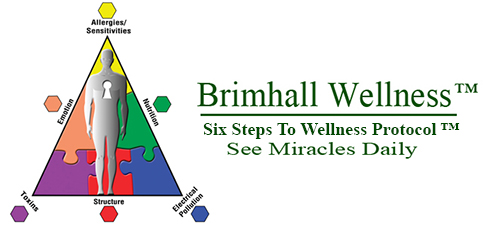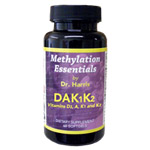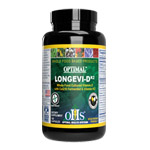
April 18, 2022 Puzzle Piece
The American Medical Association states 20 nanograms per milliliter (ng/mL) is a sufficient vitamin D level.
Many modern studies suggest 40 ng/mL is the lowest we should maintain, and that 60 to 80 ng/mL is a much more ideal level.
Personally, l like to keep mine between 80 - 90. The fear is that D,
being a fat-soluble vitamin, could cause hypervitaminosis D. Dr Harris
states he has never seen that happen in his 50 years of practice.
Vitamin D is involved in all the cells and tissues in the body,
including your immune cells. All cells need the active form of vitamin D
to affect the genetic blueprints within the genes.
Seventy-five percent of American adults and teens are deficient in
vitamin D, based on a sufficiency level of 30 ng/ml. Since 30 ng/mL is
still on the low end, most are bound to have insufficient levels for
optimal health.
Research demonstrates the vitamin D level of 40 ng/mL lowers your risk
of cancer by 67%, compared to having a level below 20 ng/ml.
A vitamin D level above 60 ng/mL lowers your breast cancer risk by more
than 80%, and a level of 40 ng/mL lowers the risk of premature birth by
60%. There’s also a strong inverse relationship between vitamin D and
other cancers, including colorectal cancer, which is the third leading
cancer killer in the U.S.
Vitamin D affects the biology of the cells and their activity throughout
the body. Therefore, D can be involved in a wide variety of
dysfunctions and labeled diseases from fetal development, heart
disease, diabetes, lung disease, premature births, and the formation of
cancer.
According to a study in Anticancer Research, it would require 9,600 IUs
of vitamin D per day to get a majority (97% of the population) to reach
40 ng/mL. The average American gets nowhere near this level unless they
are supplementing.
GrassrootsHealth, through its D*Action study, found up to six times
variability in achieved serum levels. Therefore, one person taking
5,000 IUs of vitamin D per day may achieve a level of just 20 ng/mL
while another is able to reach a level of 120 ng/mL taking the same
amount. This is one reason OHS uses predigestion to allow for maximum
absorption. It is important we test at least two times per year to make
sure are levels are adequate.
According to data published in the Archives of Internal Medicine, 75% of
American adults and teens are deficient in vitamin D, based on the low
level of 30 ng/mL.
Many studies have shown people with higher vitamin D levels have a far
lower risk of a wide variety of internal cancers. In summary, the
research has demonstrated that serum vitamin D levels of 40 ng/mL,
diminishes cancer risk by 67%, compared to having a level of 20 ng/ml or
less. Research shows most cancers occur in people with a vitamin D
blood level between 10 and 40 ng/mL. The optimal level for cancer
protection has been identified as being between 40 and 60 ng/mL.
Vitamin D in adequate levels also increases your chances of surviving
cancer if you have it. This includes melanoma, the most dangerous form
of skin cancer. There is also evidence vitamin D can improve treatment
outcomes. For example, adding vitamin D to the conventional treatment
for pancreatic cancer was found to boost the effectiveness of the
treatment.
It also plays a significant part in protecting you from COVID-19 and
protects you from autoimmune diseases. Vitamin D Deficiency has been
linked to colorectal cancer. In a 2018 study, researchers found an
inverse relationship between vitamin D and colorectal cancer, which in
2022 is the third leading cancer killer in the U.S. The vitamin D levels
of 5,700 colorectal cancer patients in the U.S., Europe and Asia were
compared to 7,100 cancer-free controls.
- People with a vitamin D level of 12 ng/mL or below had a 31% higher
risk for colorectal cancer compared to those with levels between 20 and
25 ng/mL
- Those with levels between 30 and 35 ng/mL had a 19% reduced risk for colorectal cancer
- Those with levels between 35 and 40 ng/mL had a 27% reduced risk
- For each 10 ng/mL increase in circulating vitamin D, the risk for colorectal cancer was reduced by 19% in women and 7% in men
We could keep citing research on vitamin D for many more pages but let
us suffice to say adequate levels of vitamin D crosses many borders to
allow us to have better physiology, with increased health and wellness.
OHS has Vitamin D
in many of the synergistic formulas and Paks. If wanting to increase
bone density and help remove unwanted calcium deposits, consider
DAK1K2 developed by Dr Marc Harris.

This is my favorite D and is what I take and recommend most often.
For elevating vitamin D also consider
Longevi-D K2, which also contains CoQ10 (Ubiquinone-Fermented) and acerola cherry in a Cultured Media Blend and Opti-Blend Delivery System.

Yours in Health and Wellness,
John W Brimhall, DC, FIAMA, DIBAK, Formulator
Optimal Health Systems presents Dr. John Brimhall's
"6 Steps to Wellness" Certification Training Seminar
Phoenix, AZ | April 29-30, 2022
What's in it for you?
- Learn & Become Certified in Dr. Brimhall's 6-Step Method to Holistically Treat Patients & Provide Better Results
- Build Confidence Within Yourself & Your Clinic
- Network & Connect With Other Holistic Health Professionals
- Free Functional Testing Kit per Clinic
Seminar Ticket Pricing
Only $295 Per Ticket
(Discounted from Normal Price of $395)
*Additional Discount per Additional Sign Up*
SEATING IS LIMITED! ACT FAST IF YOU WANT TO SAVE YOUR SEAT!!
Seating to this seminar is extremely limited as we are only
allowing a small group of health professionals to attend in hopes of
keeping the learning environment quiet and controlled for audio and
visual recording.
How many attendees will be attending from your clinic? (The more seats you reserve, the cheaper the price per seat.)
Students, please call Optimal Health Systems to sign up at discounted student rates.
(800) 890-4547